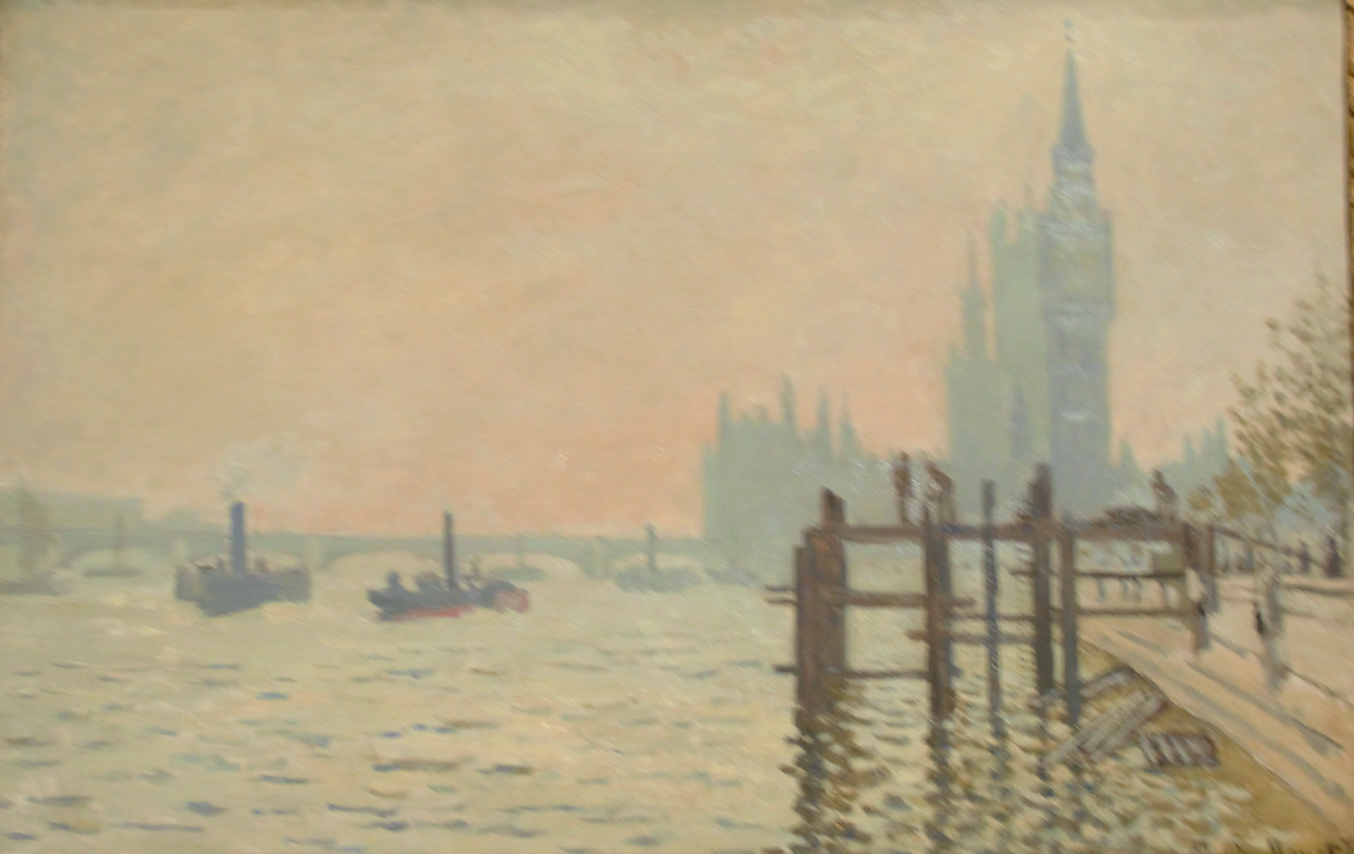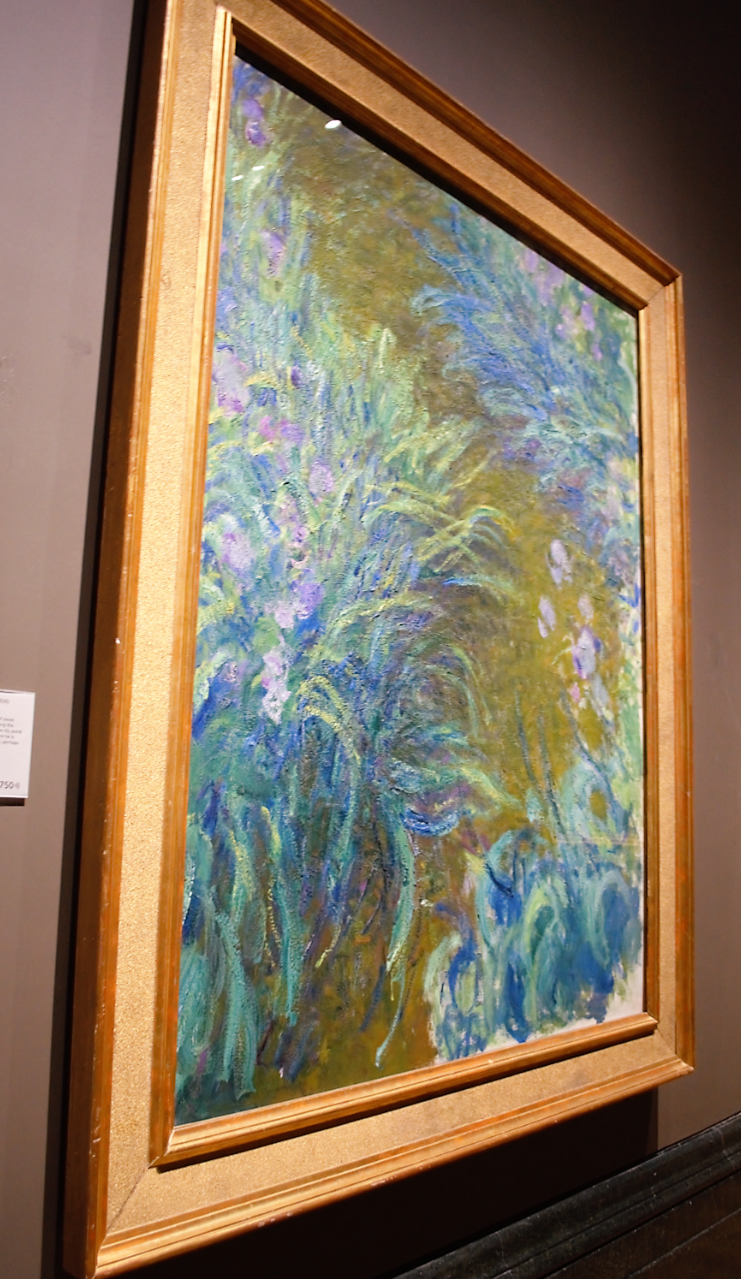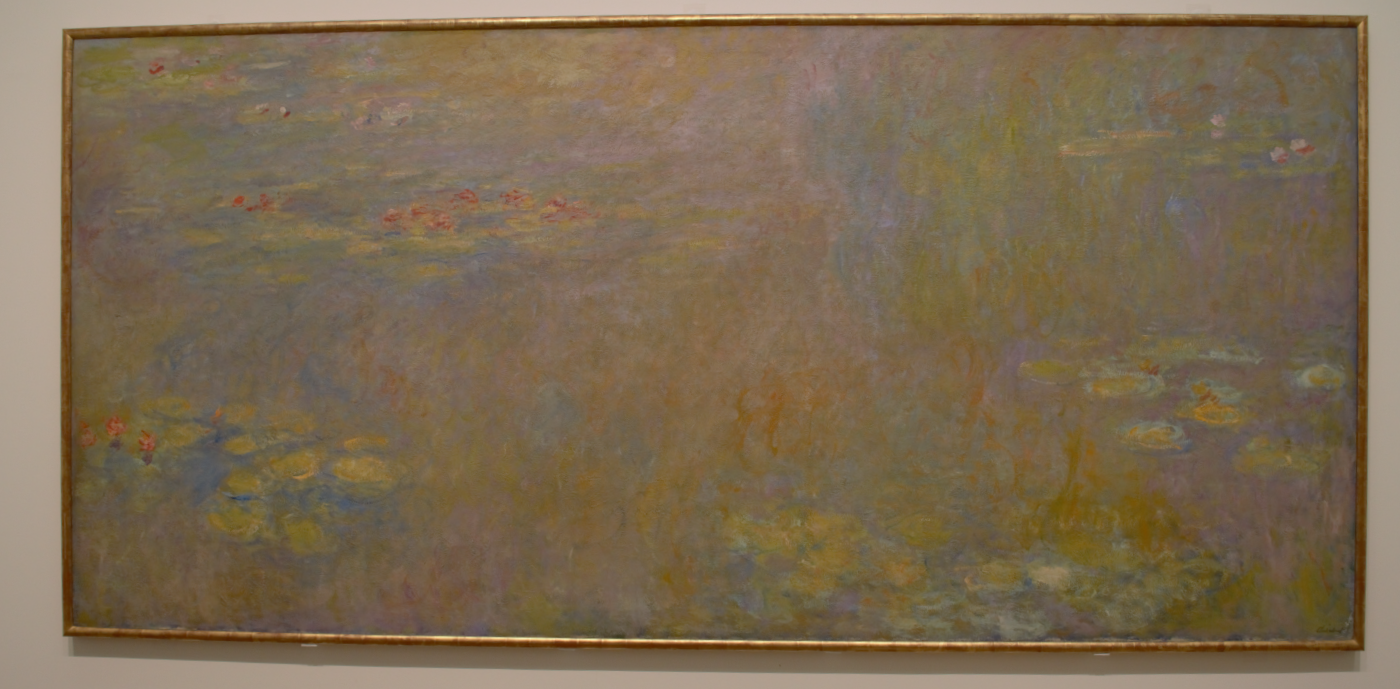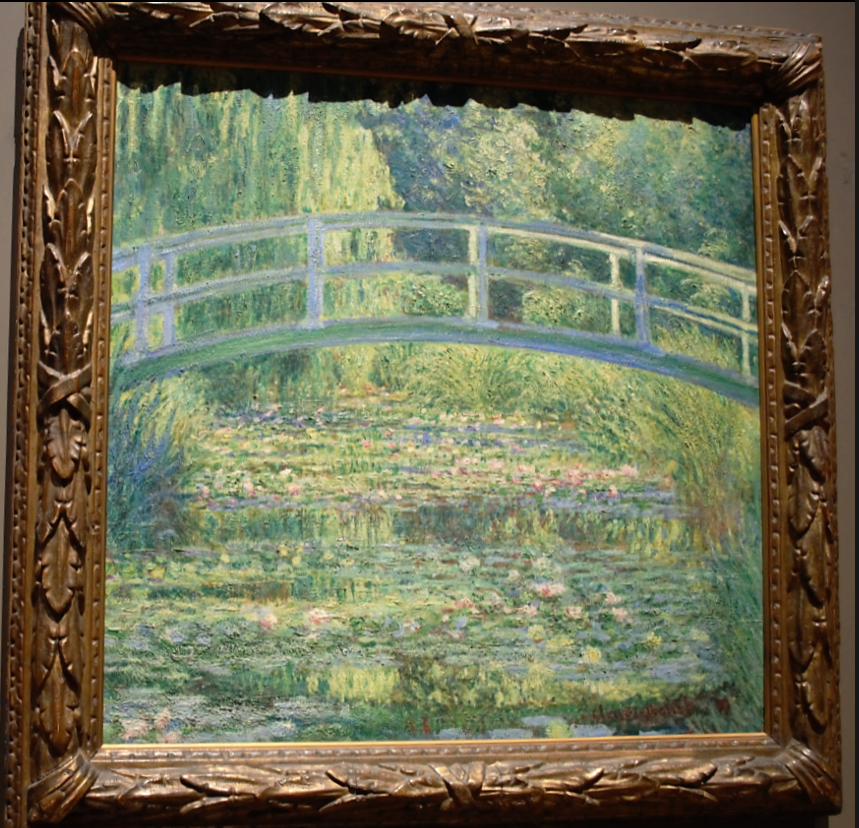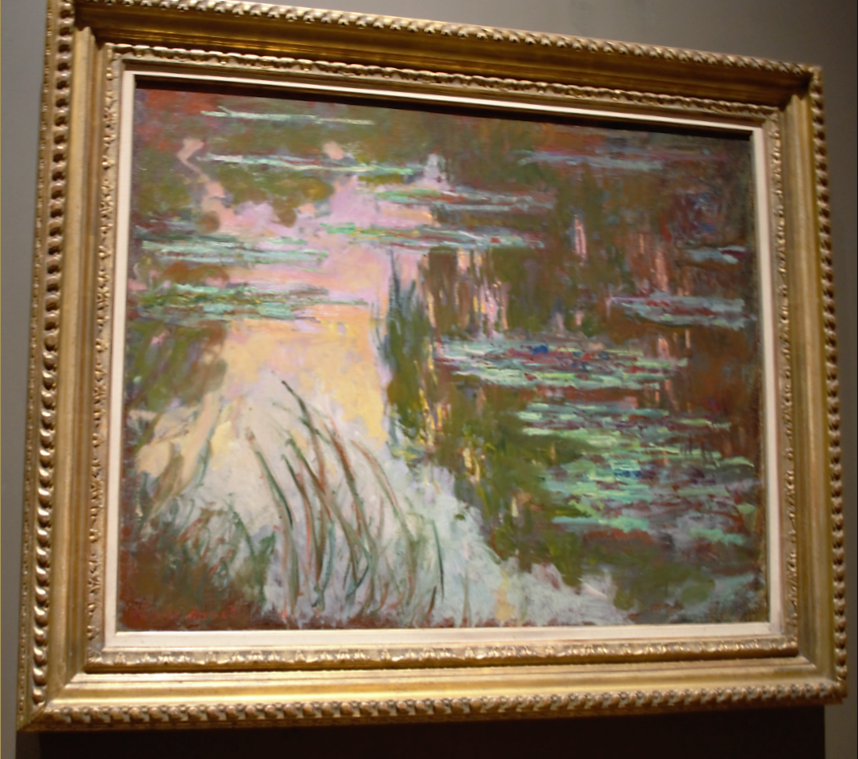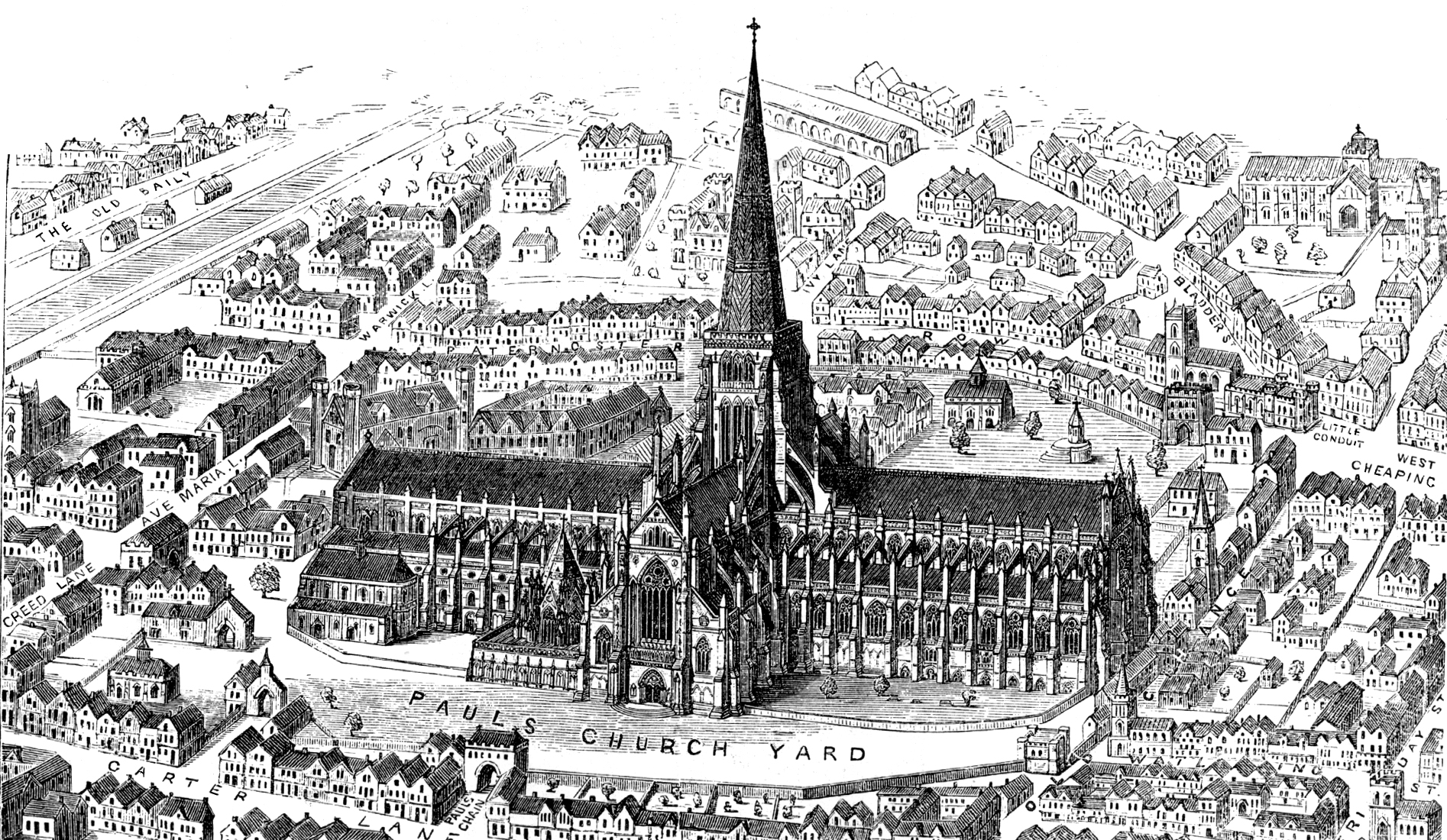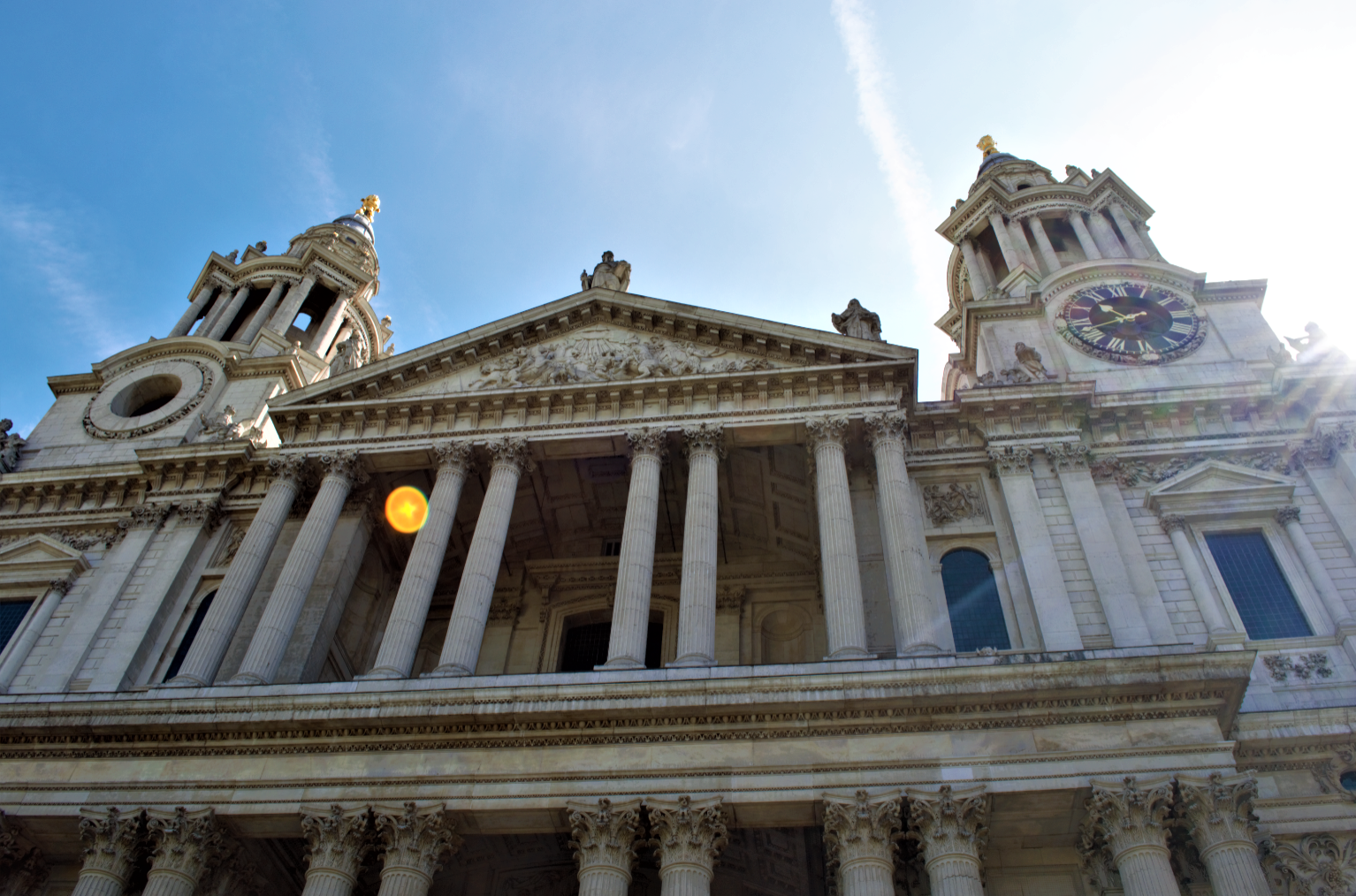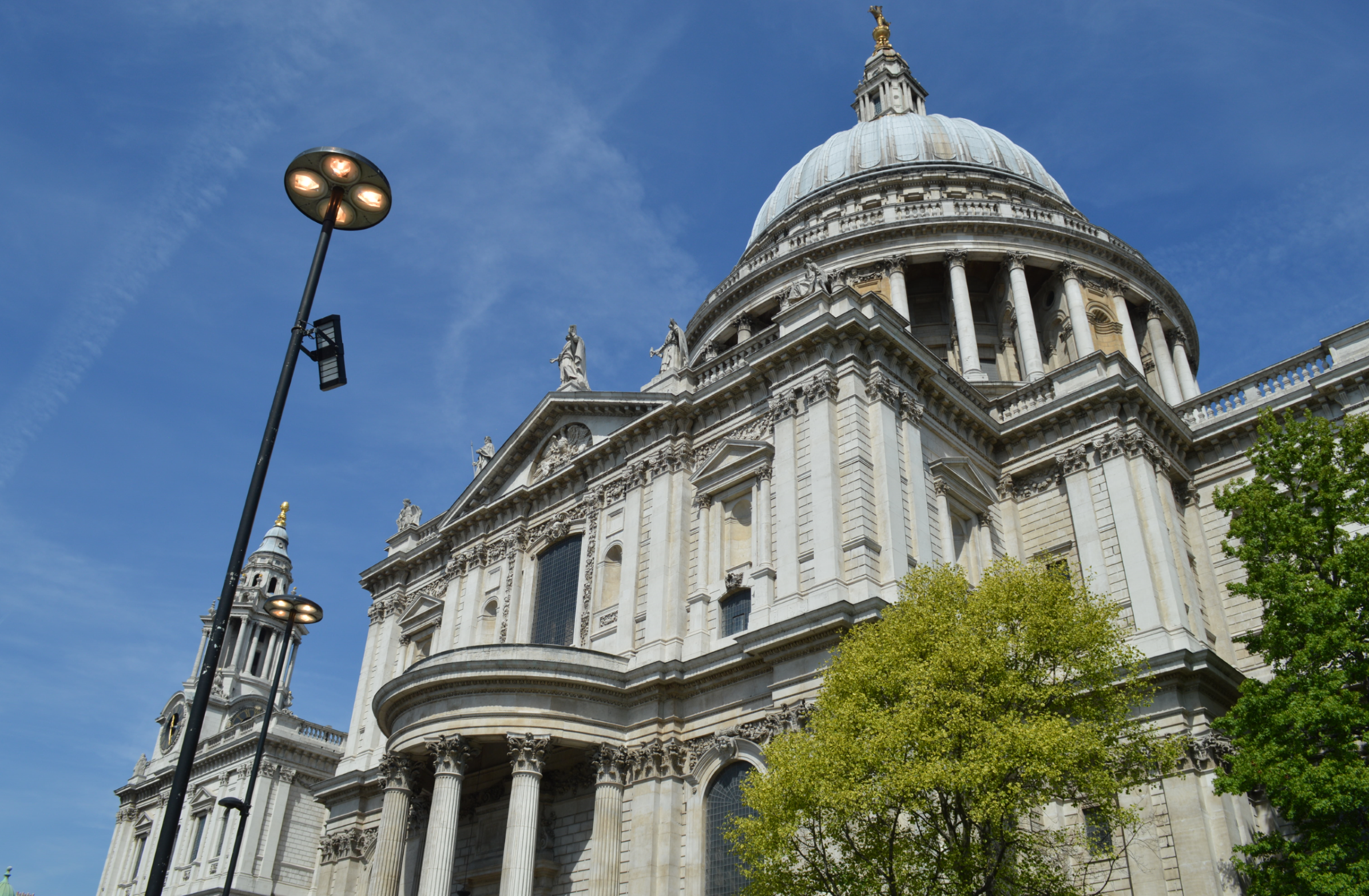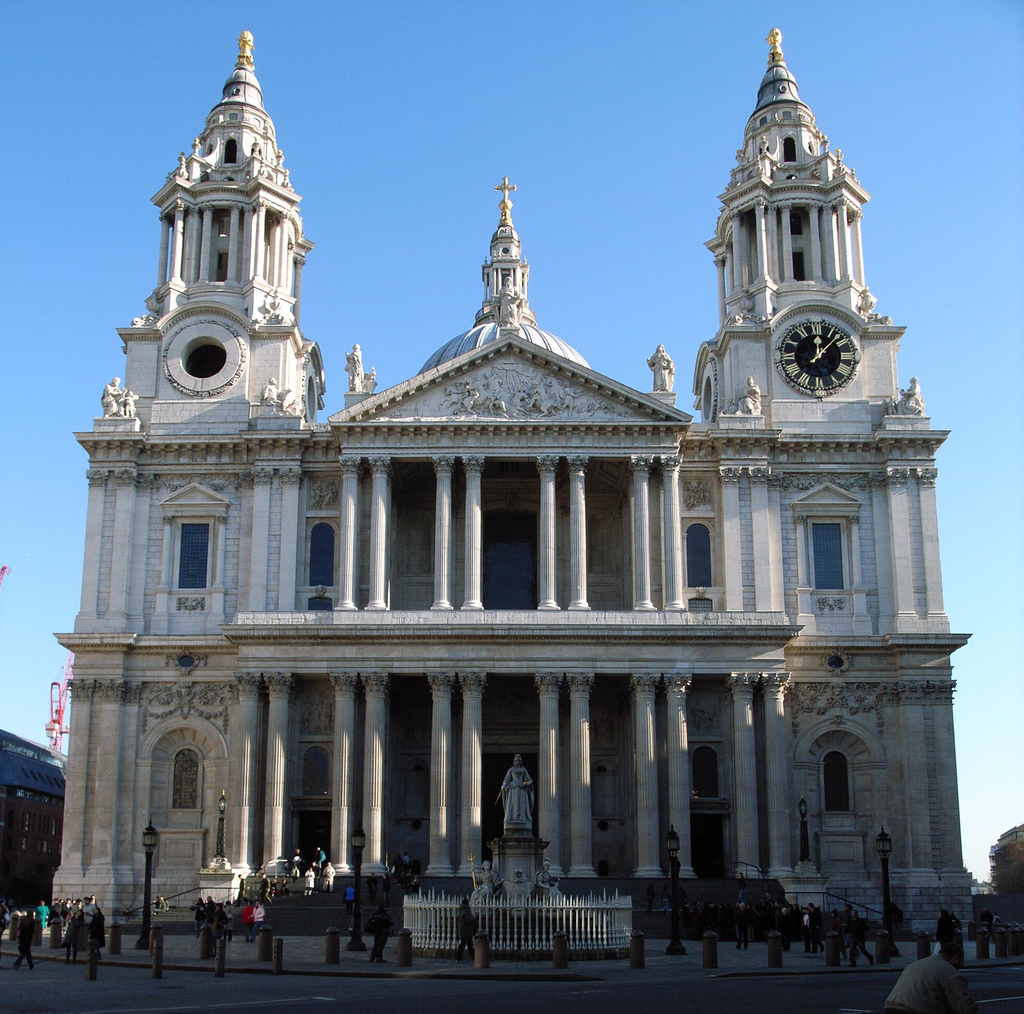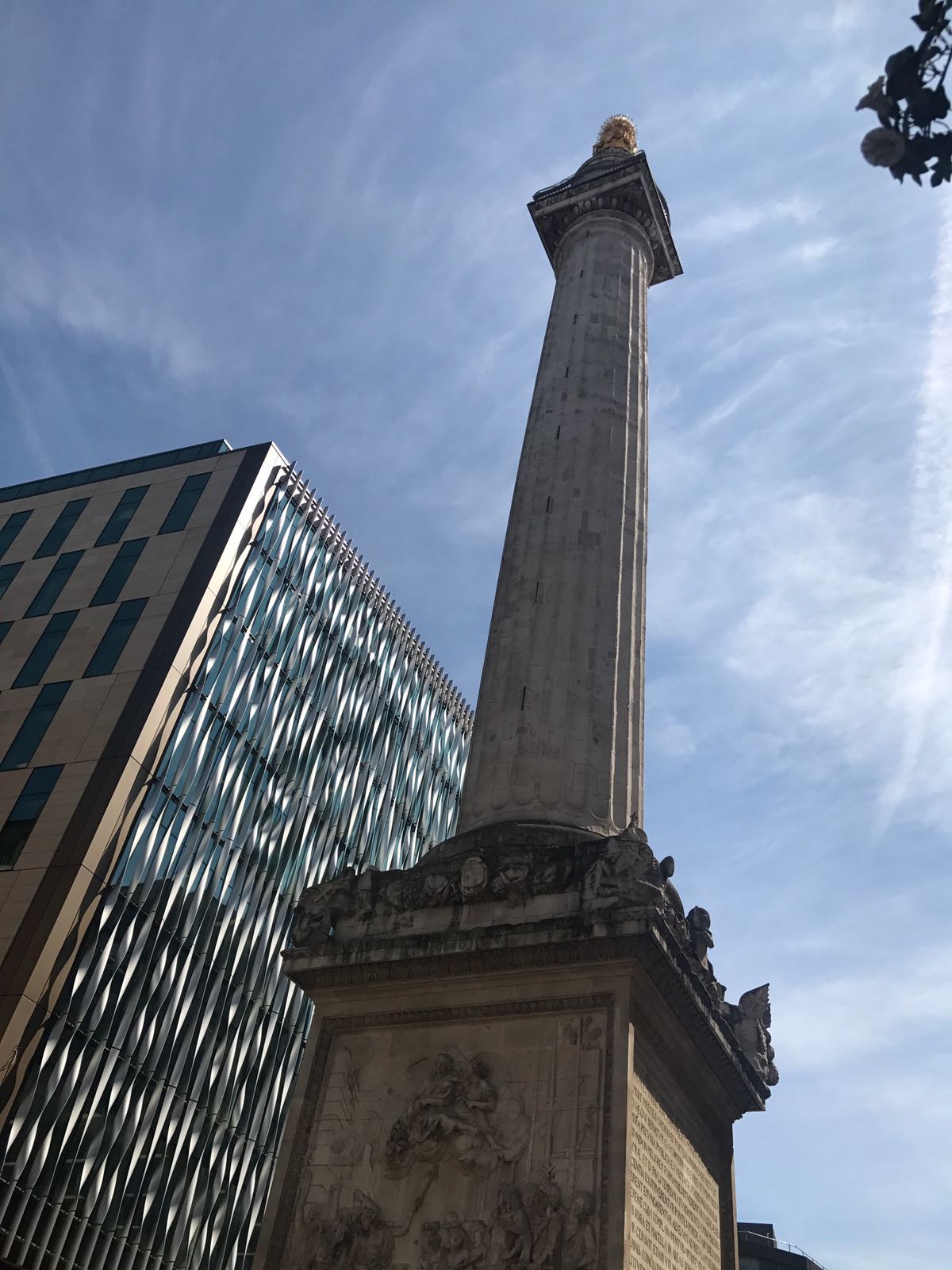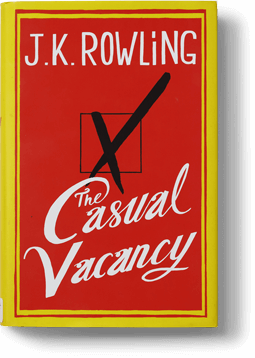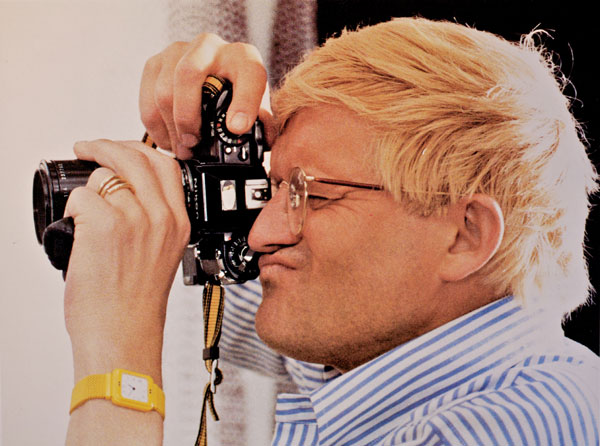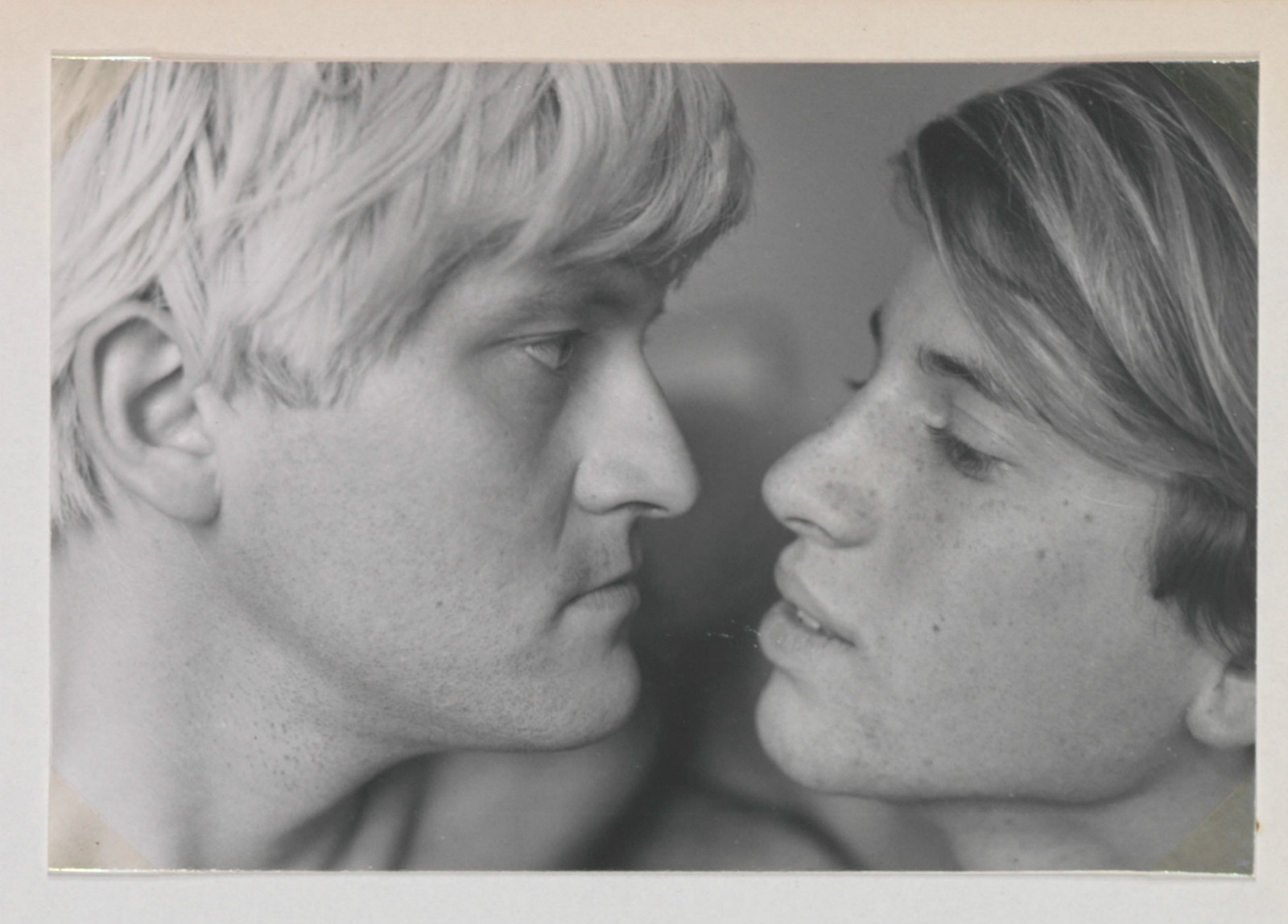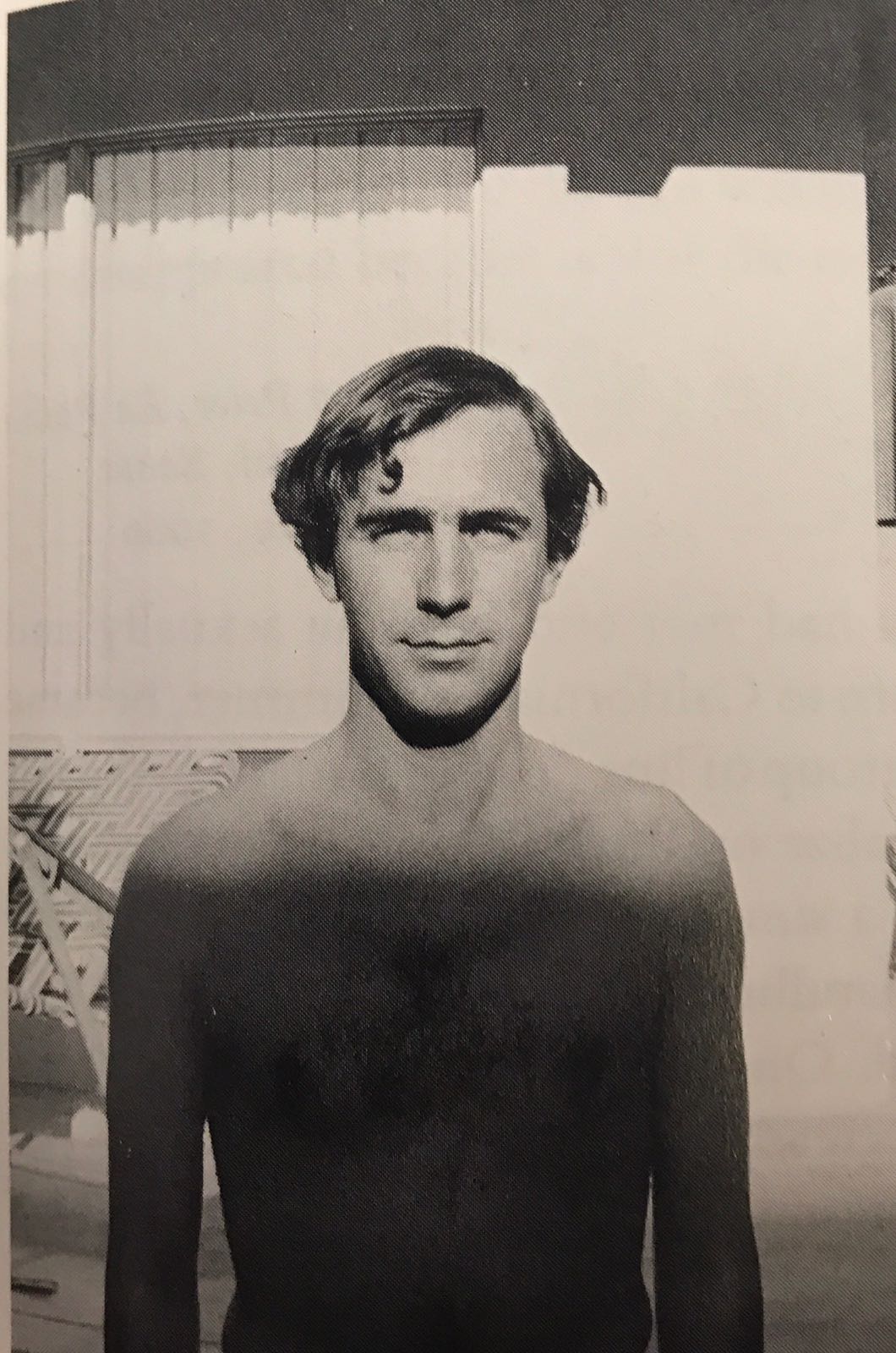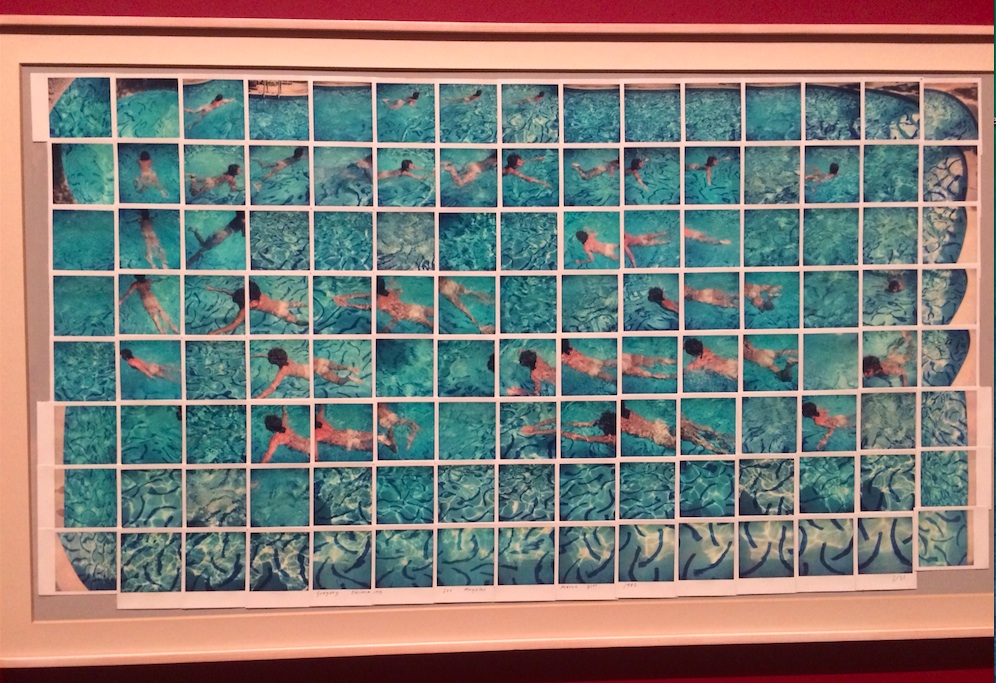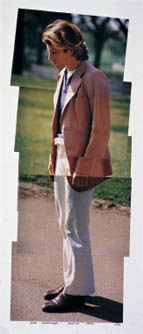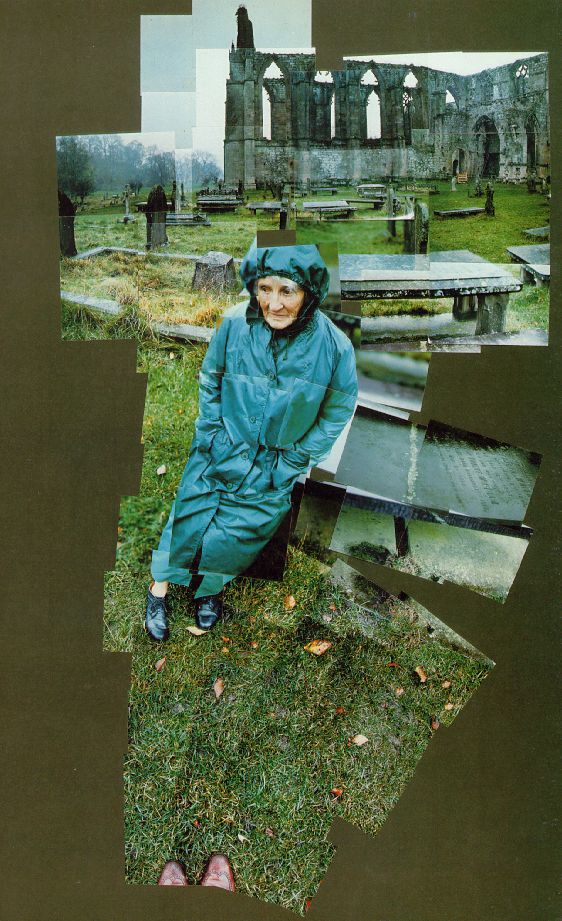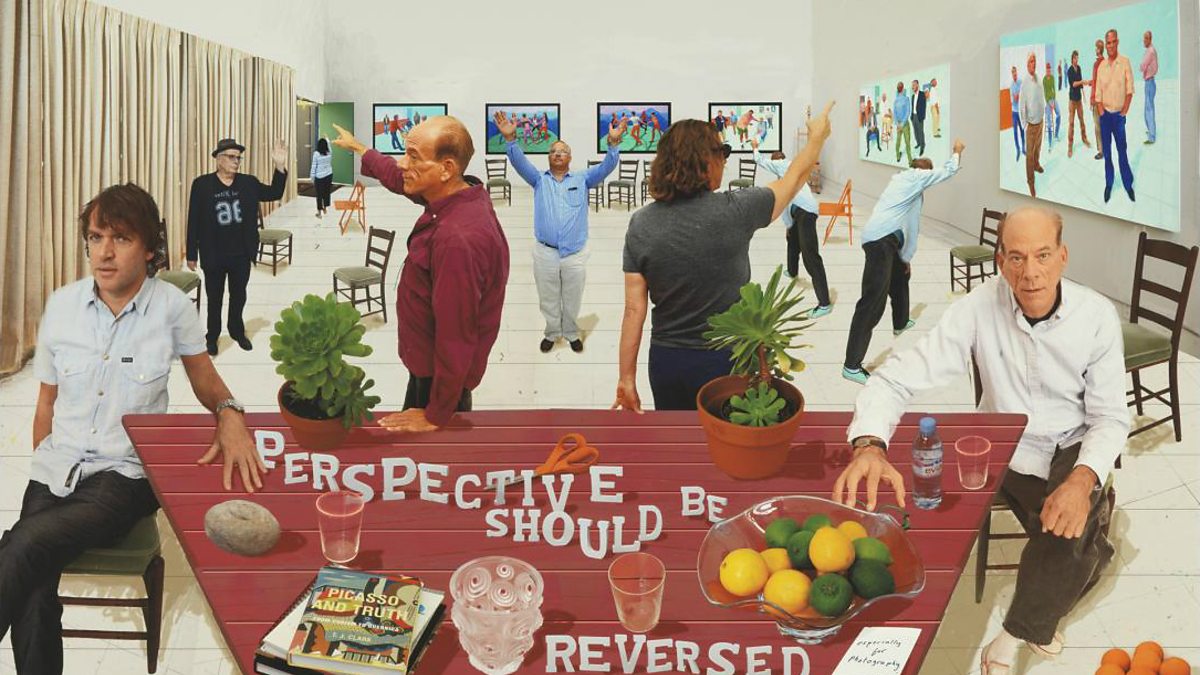Difference between revisions of "Adding Pigment"
From Londonhua WIKI
Akgiacoman (talk | contribs) |
Akgiacoman (talk | contribs) |
||
| Line 68: | Line 68: | ||
}} | }} | ||
<br> | <br> | ||
| − | Charles Dickens was part of a huge family, being born the second of eight children on 1812, in Portsmouth, England. His parents named him Charles John Huffam Dickens and even though many people have heard about him and some even know his work, not everyone knows about his middle names because he decided never to use them and e simply known as Charles Dickens. However, even though he was raised with high aspirations of himself, it is almost impossible for him to have imagined the reach of his literary work in later years and how much his early life would influence him in the future. He was in London for the first time at the age of three because of his father's work and although most people are unaware at such an early age, it is believed that he "absorbed the sights, smells and sounds of the City" | + | Charles Dickens was part of a huge family, being born the second of eight children on 1812, in Portsmouth, England. His parents named him Charles John Huffam Dickens and even though many people have heard about him and some even know his work, not everyone knows about his middle names because he decided never to use them and e simply known as Charles Dickens. However, even though he was raised with high aspirations of himself, it is almost impossible for him to have imagined the reach of his literary work in later years and how much his early life would influence him in the future. He was in London for the first time at the age of three because of his father's work and although most people are unaware at such an early age, it is believed that he "absorbed the sights, smells and sounds of the City"<ref>CHARLES DICKENS BIOGRAPHY. (n.d.). Retrieved June 06, 2017, from http://www.dickenslondontours.co.uk/dickens-biography.htm</ref> As in any big family, money issues started to arise, however, that did not stop them from being happy in the early days. Nevertheless, it became a real problem for Charles when he was only twelve, as his father was imprisoned for debt. To help with the family needs, Charles was forced to leave school and work. We can easily infer that he did not make much money as a twelve year old, and that having his childhood taken away from him because of his parents mistakes left him very unhappy. For it was not his fault at all that his father as imprisoned, but yet he had to pay for his mistakes. This caused him great suffering but still he sacrificed himself to help his family. "He felt abandoned and betrayed by the adults who were supposed to take care of him."<ref>Charles Dickens. (2017, April 28). Retrieved June 06, 2017, from https://www.biography.com/people/charles-dickens-9274087</ref> |
<br><br> | <br><br> | ||
Even though he had no clue back then, that same situation gave him the freedom to explore the streets and corners of London and get to know every secret the city had to keep, paying close attention to his surroundings, he was able to get to know it "like the back of his hand". However, Dickens is credited with a passion for London and according to Michael and Mollie Hardwick in their book Dickens's England, "he entertained no such thing". For he grew up in the streets of London and this was not by choice, which allowed him to "greedily observe and absorb the city" getting to know it with "extensive and peculiar knowledge" as said by Michael and Mollie Hardwick, but not "loving it". <ref>Hardwick, M., & Hardwick, M. (1970). Dickens's England. London: Dent</ref> Despite this, it was not all bad for young Charles, because living as an adult while being a child also must have formed his character from a very early age and force him to mature and above all... think. Then for a short period of time he was able to go back to school when his father received and inheritance and was let free. I say for a short period of time, as bob the age of fifteen he got a job as an office boy to help out his family again. Though this was not what he would have wanted for himself, that job propelled his writing career for, as many other authors, he began writing as a journalist for a local news paper. This job also allowed him to get to know a lot of people and start building a network of contacts that would allow him to keep escalating up in his career. <ref> BBC . (n.d.). History - Charles Dickens. Retrieved June 06, 2017, from http://www.bbc.co.uk/history/historic_figures/dickens_charles.shtml</ref> Even back then he could infer the importance of "knowing people" so he did and soon he started getting better and better jobs still as a journalist, collaborating also with other artists to create material for the press. He started publishing monthly parts of what he called "The Pickwick Papers" in the newspaper and it was a massive success. By this time, Charles's personal life was also going very well, as in 1836 he married Catherine Hogarth, who would give him the great gift of parenthood about a year after. Charles gave his name to his first son with Catherine Howard, who would give him another nine children. It seems peculiar how after being born in such a huge family and knowing what it was like, he still made a huge family of his own when it was his turn to choose. Maybe after all, his childhood and his family was not as bad, or maybe he did not think it through when he was having children. In any way, because of his powerful career, his family was never positioned in the situation he had to grow up in. | Even though he had no clue back then, that same situation gave him the freedom to explore the streets and corners of London and get to know every secret the city had to keep, paying close attention to his surroundings, he was able to get to know it "like the back of his hand". However, Dickens is credited with a passion for London and according to Michael and Mollie Hardwick in their book Dickens's England, "he entertained no such thing". For he grew up in the streets of London and this was not by choice, which allowed him to "greedily observe and absorb the city" getting to know it with "extensive and peculiar knowledge" as said by Michael and Mollie Hardwick, but not "loving it". <ref>Hardwick, M., & Hardwick, M. (1970). Dickens's England. London: Dent</ref> Despite this, it was not all bad for young Charles, because living as an adult while being a child also must have formed his character from a very early age and force him to mature and above all... think. Then for a short period of time he was able to go back to school when his father received and inheritance and was let free. I say for a short period of time, as bob the age of fifteen he got a job as an office boy to help out his family again. Though this was not what he would have wanted for himself, that job propelled his writing career for, as many other authors, he began writing as a journalist for a local news paper. This job also allowed him to get to know a lot of people and start building a network of contacts that would allow him to keep escalating up in his career. <ref> BBC . (n.d.). History - Charles Dickens. Retrieved June 06, 2017, from http://www.bbc.co.uk/history/historic_figures/dickens_charles.shtml</ref> Even back then he could infer the importance of "knowing people" so he did and soon he started getting better and better jobs still as a journalist, collaborating also with other artists to create material for the press. He started publishing monthly parts of what he called "The Pickwick Papers" in the newspaper and it was a massive success. By this time, Charles's personal life was also going very well, as in 1836 he married Catherine Hogarth, who would give him the great gift of parenthood about a year after. Charles gave his name to his first son with Catherine Howard, who would give him another nine children. It seems peculiar how after being born in such a huge family and knowing what it was like, he still made a huge family of his own when it was his turn to choose. Maybe after all, his childhood and his family was not as bad, or maybe he did not think it through when he was having children. In any way, because of his powerful career, his family was never positioned in the situation he had to grow up in. | ||
<br><br> | <br><br> | ||
| − | After his first great success he started to write nonstop and still with great quality, style and attention to detail. Very few people know London as he did, which allowed him to | + | After his first great success he started to write nonstop and still with great quality, style and attention to detail. Very few people know London as he did, which allowed him to be the voice of the city itself. He had a very special way of writing about London granted by the events he went through in his childhood to what he also added his own touch. His increasing popularity allowed him to travel the world with his wife and even live in different places with her. However, he never took traveling as a vacation, for he continued to write and publish during these periods of time as if his travels only inspired him more and more instead off exhausting him. He was also in general a very nice person as he helped to found "The Guild of Literature and Arts" which was an organization that helped young artists struggling to make it through by presenting plays to the public. As he has once struggled in his life he probably founded this to help other fellow artists struggle a little bit less as they started to build their career just like he did. In addition to this, he also often performed as a character in the plays presented by that organization. At some point he became so involved in the theatrical performances that when he was looking for a woman to represent a female character in one of his plays, he met the actress Ellen Lawless Ternan who became his intimate friend and, according to some biographers, his lover. This last thing is still a topic of discussion but it is mostly attributed to the fact that it happened around the same time when Dickens separated from his wife and started to see his children less. In the biography of Charles Dickens posted in the official website of the Dickens London Tours, Charles's daughter Kate recalled, ‘My father was like a madman… He did not care a damn what happened to any of us. Nothing could surpass the misery and unhappiness of our house.’ <ref>CHARLES DICKENS BIOGRAPHY. (n.d.). Retrieved June 06, 2017, from http://www.dickenslondontours.co.uk/dickens-biography.htm</ref> Also according to that same biography, rumors spread about Charles Dickens's marriage ending because he was having an affair with his sister-in-law Georgina Hogarth. Dickens died at the age of 58 in England and was buried in Poet’s Corner at Westminster Abbey. The most amazing thing about his besides his unique perspective of London, is the way despite all the struggles his life brought to him, he never stopped writing. And this is proven y the fact that by the time of his death he left his final novel "The Mystery of Edwin Drood" unfinished. <ref>Charles Dickens. (2017, April 28). Retrieved June 06, 2017, from https://www.biography.com/people/charles-dickens-9274087</ref> Charles Dickens is taught in schools all around the world as one of the main characters of English Literature, and he became himself a source of inspiration immediately linked to London. |
<br><br> | <br><br> | ||
<br> | <br> | ||
Revision as of 22:08, 19 June 2017
Contents
Adding Pigment
by Kristy Giacoman & Sofia Reyes
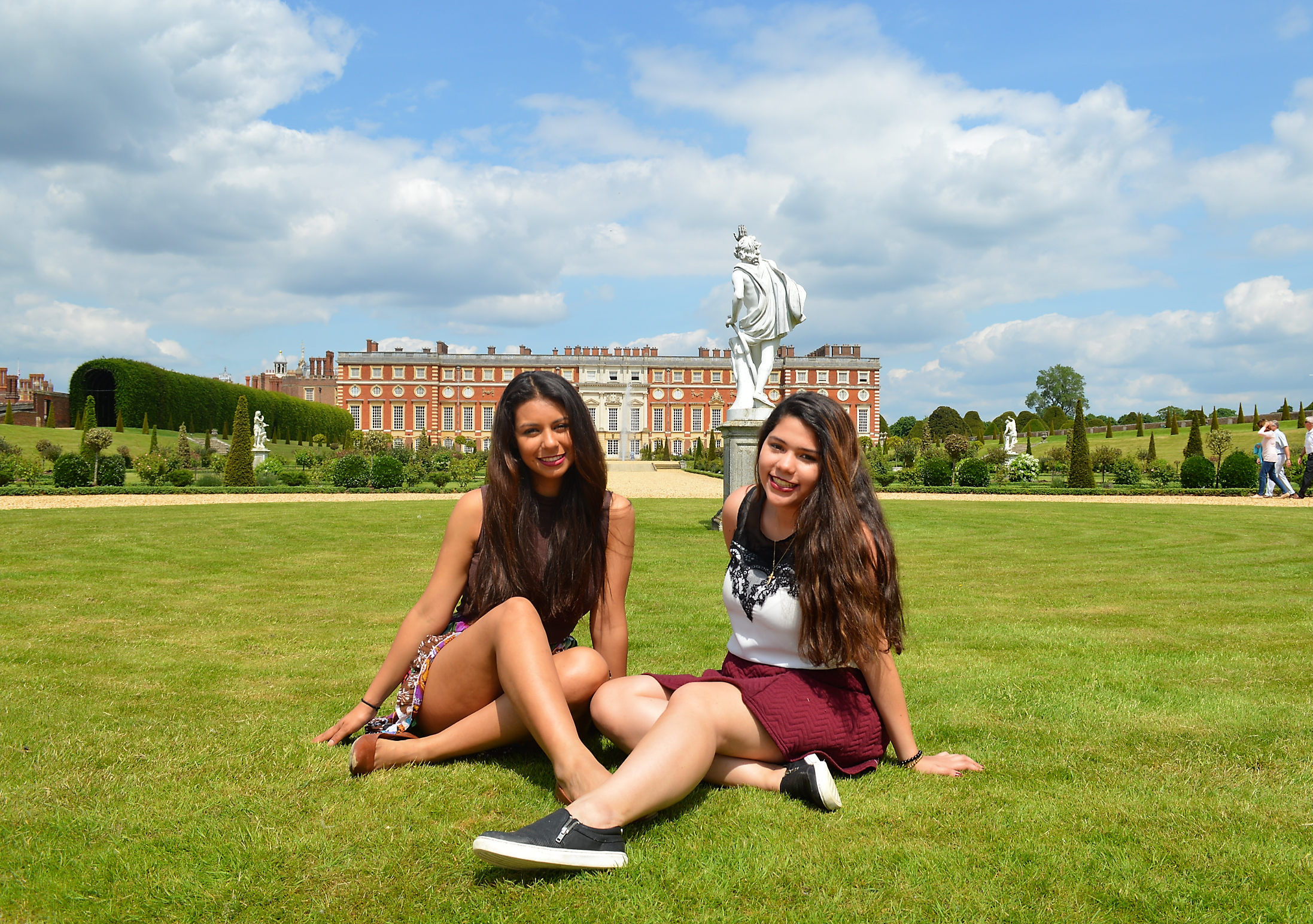 Us |
Abstract
"A London Full of Colour" is a project that aims to portray a different reality of the daily life of London citizens. By picturing different scenarios in their reality comparing them to the reality that I choose for each one of them, the audience will be able to admire the beauty and uniqueness of the city from a different perspective. I have gone to international poetry competitions and taken painting and photography courses before arriving to college. This project will combine my favorite forms of expression through art and hopefully brighten the days of the viewers. The main message I wish to convey is that every single one of us chooses the reality they want to live in, meaning that the same place could be seen as a prison for our souls or a wonderland for our imagination. The goal of this Milestone, however, is to paint five acrylic surrealistic paintings of the most emblematic sites in London exaggerating the use of bright colors instead of the usual gray palette that is seen due to the weather.
Introduction
The title of this Milestone was chosen to be "Adding Pigment" as for every person that goes through London is not only influenced by it and its weather as seen in Colourless London, but at the same time, they leave a piece of them that adds to the beauty of this city. In the same way as they take inspiration from the amazing stories London has to tell, the create a new chapter, and if they do it well, a really good one. Each artist presented in the background of this Milestone was chosen because of their irrefutable relevance to the history of London in the artistic side. In the background we present the way in which different situations they lived through their lives conducted them to become some of the most influential and inspiring individuals the streets of London have seen. Likewise, each artist is known to have revolutionized in some way their field "adding pigment" to the existing base of knowledge and techniques. From the field of Painting, Literature and Architecture, we chose a set of six artists decided in "Artists from the Past" and "Artists from the Present" to, in some way, categorize them by periods and let the readers draw conclusions about the similar traits in their work. Inspired by these great minds, we leave in the deliverable our own works of art painting the same sites where pictures were taken for Colourless London, choosing a specific picture for each one and "replicating it" in some way with acrylic paintings, just the way David Hockey used to do with his photography. The difference, however, is that we aim to emphasize the contrast between the gray color palette seen in the pictures that characterizes London and the use of color in our paintings that represents our perspective of the city. In this way we seek to add pigment to the scenery in a literal and metaphorical way.
Section 1: Background
Artistic Component
"Despite the widespread social anxiety caused by the fog, many artists found in it a source of inspiration from a wide broad of perspectives. For some, fog represented a looming presence, alive and malignant."[1] This quote from "The London Fog" by Corton perfectly exemplifies the way in which some people used too feel about the fog, however, for some other many artists, the fog could be seen as magical or even romantic. the same thing could be seen from very different perspectives and used for many different purposes. The fog could be used by robbers to easily disappear after their theft and the same fog could also be used by artists like Monet to show the world the beauty of a city like London. Likewise the fog could be the source of sickness and depression or could also be the source of motivation and inspiration, giving a person's mind the push needed to boost their creativity. Just like that, the city of London has been the source of inspiration and spectator of some of the greatest minds the world has seen. From painters to writers to architects, London has evoked many shades of feelings that have driven locals and foreigners to accomplish great things.
Artists From the Past
Being a city immersed in its own history, London has seen a lot happening through its streets, and digging in the past, it is easy to find a more gloomy, mysterious and heavy perspective of the fog, enraptured in all kinds of art. The following representatives were chosen because of their imminent and irrefutable success in their disciplines.
Monet
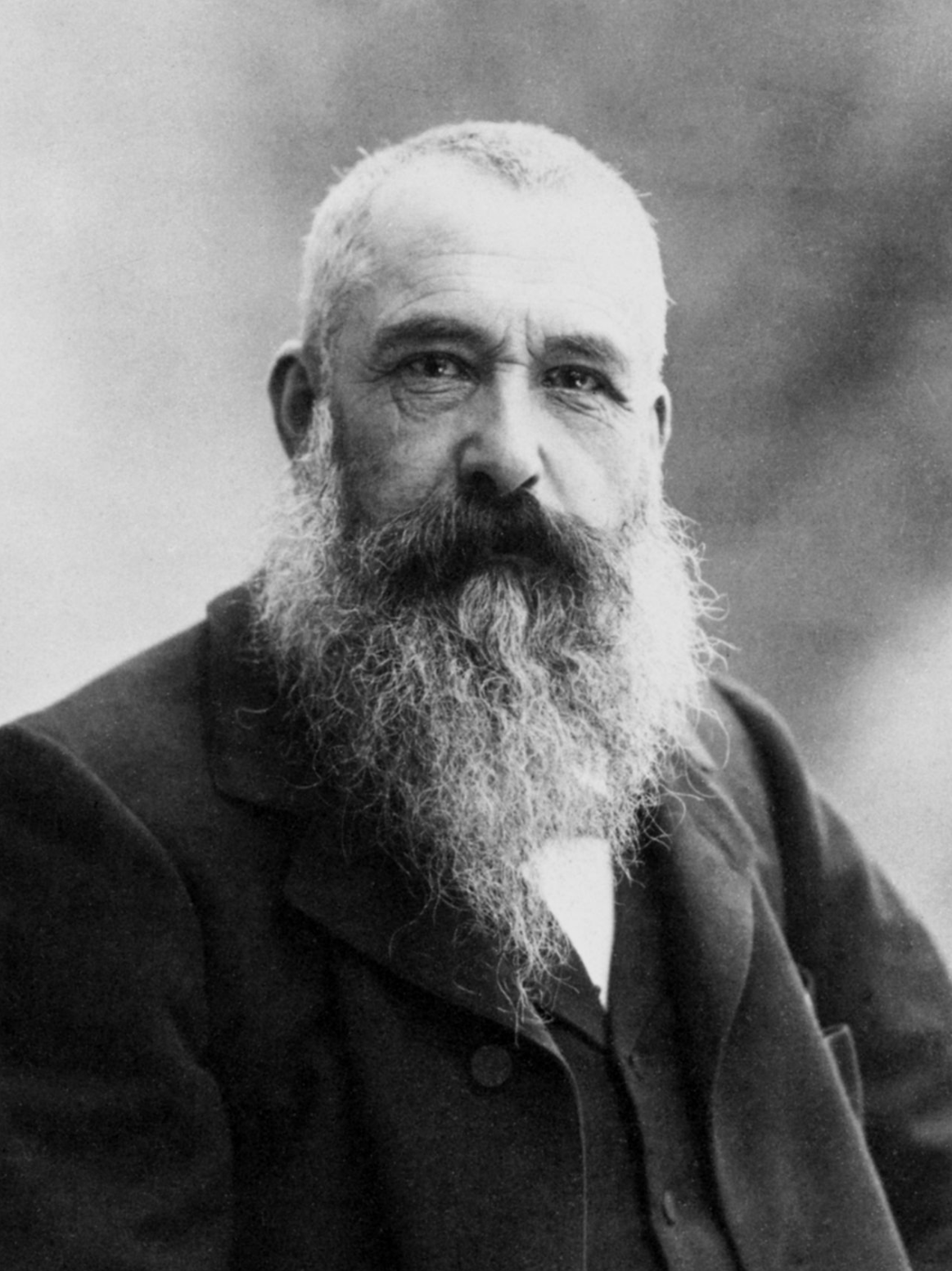 by Nadar | |
| date | 1 January 1899 |
|---|---|
Claude Monet was a French artist of the Impressionist movement. This movement was named after one of his paintings called Impression, Sunrise. This is because you can only see an impression of the sunrise and the person in it. The viewer has to analyzed, assume and connect the dots to figure out the painting. This is not exactly abstract art but it is definitely different from traditional art at that time. Monet had many artists as inspiration and started with no knowledge of art. He became to be known one of the best-known artists in the world. His purpose was to overcome tradition and use intense brushstrokes to create an impression of a painting. He started painting in Paris and many scenes of the Seine river. He painted impressions of landscapes of the place he lived in at different times of the day. We can clearly see this in one of his biggest collection of paintings Water Lilies that he painted when he was living in Givenchy. Monet moved a lot during his life mainly within France, however, during the Franco-Prussian War, he moved to London for two years. [2]
During his time in London, he painted many of its landscapes and buildings at different times of the day as he was known for. He painted many views from the Thames including Parliament and Westminster. His short stay in London resulted in the largest series of paintings that he had yet produced. [3] Monet, as many artists admired the London fog. As Christine Corton said in her book London Fog in page 184 Monet commented " Without the fog, London wouldn't be a beautiful city... It's the fog that gives it it's magnificent breadth". I believe that he was intrigued by the fog as it went alongside this style. The fog was not traditional to him as he never saw it before in any French city. He portraits the fog as part of the landscape or the impression of the landscape which also gave him originality.
The pigment Monet added was his originality and how even though he panted the same thing many times, each painting was unique. Eventhough it was the same lanscape you feel it it was a completely different enviroment. He focused a lot in the lights of the painting and used a distinct color pallete for each painting. This different use of light ad color provided him the irrefutable fame he currently has.
Water Lilies at Tate Modern
Almost all life Monet painted primarily areas where he lived. He changed a lot his subjects and how he depicted them. Earlier in his life he chose to depict contemporary landscapes. For example, during his time in London he produced some parks of central London and the River Thames. Here he shows the misty atmosphere of the capital on a spring day, with the Houses of Parliament and Westminster Bridge in the background.<rsf> They are contrasted with the jetty in the foreground casting broken shadows on the river, and the new foliage of the trees on the Embankment to the right. Around 1880 he had become preoccupied on raw nature and he also worried a lot in the effects of light. From around 1890 his prime concern became the ever-changing environment and colored air. Monet's ambition of documenting the French countryside led him to adopt a method of painting the same scene many times in order to capture the changing of light and the passing of the seasons. A clear example of this is Water Lilies.In 1899 he began painting the water lilies, first in vertical views with a Japanese bridge as a central feature, and later in the series of large-scale paintings that was to occupy him continuously for the next 20 years of his life. From 1909-1926 he produced this series of paintings that were mainly Water Lilies at different times of the day and from different perspectives. This where some of the most expansive, ambitious and luminous canvases of his long career. Monet described his 'Water-Lilies' as 'producing the effect of an endless whole, of a watery surface with no horizon and no shore'. Distance and perspective are abolished; a limitless expanse of water occupies our entire field of vision. [4] By this time he was so famous that collector from all over the world wanted his paintings. Through his life he wrote various letters when he was painting away from home. Letters that gave insights into his work.[5]
Charles Dickens
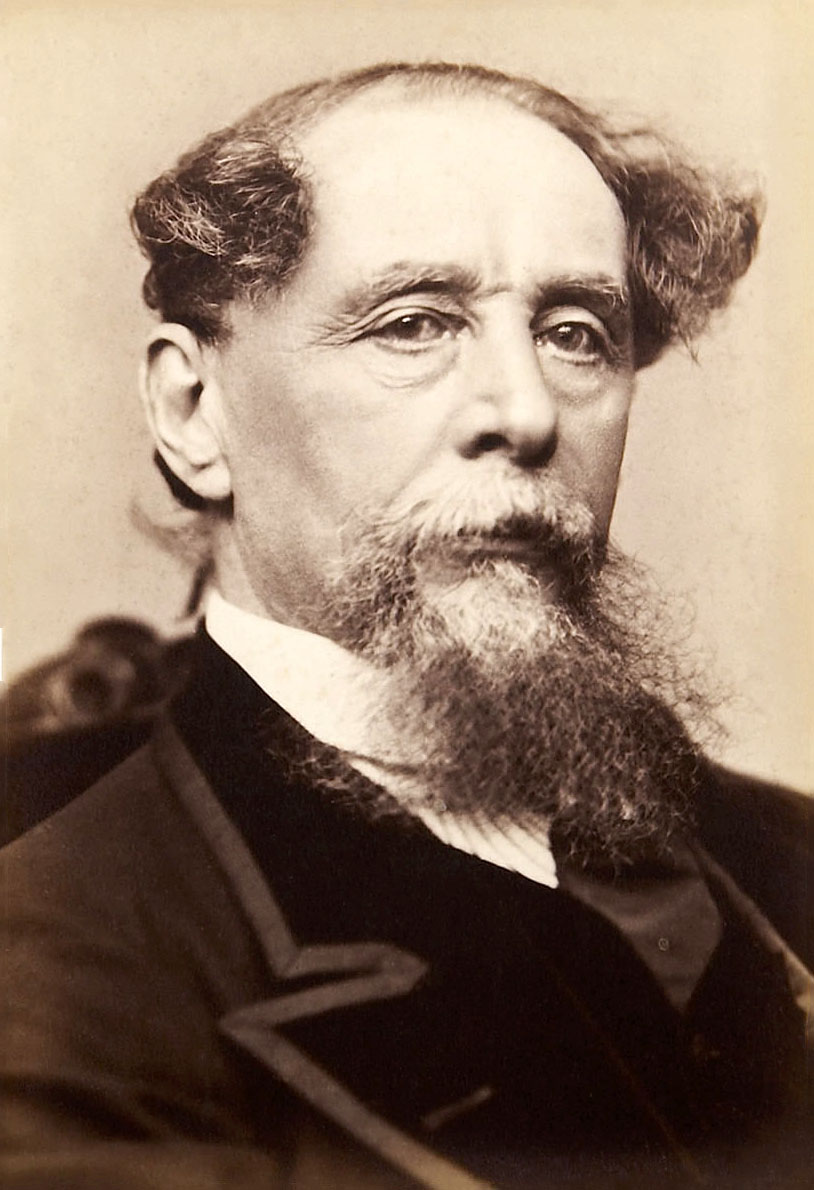 |
Charles Dickens was part of a huge family, being born the second of eight children on 1812, in Portsmouth, England. His parents named him Charles John Huffam Dickens and even though many people have heard about him and some even know his work, not everyone knows about his middle names because he decided never to use them and e simply known as Charles Dickens. However, even though he was raised with high aspirations of himself, it is almost impossible for him to have imagined the reach of his literary work in later years and how much his early life would influence him in the future. He was in London for the first time at the age of three because of his father's work and although most people are unaware at such an early age, it is believed that he "absorbed the sights, smells and sounds of the City"[6] As in any big family, money issues started to arise, however, that did not stop them from being happy in the early days. Nevertheless, it became a real problem for Charles when he was only twelve, as his father was imprisoned for debt. To help with the family needs, Charles was forced to leave school and work. We can easily infer that he did not make much money as a twelve year old, and that having his childhood taken away from him because of his parents mistakes left him very unhappy. For it was not his fault at all that his father as imprisoned, but yet he had to pay for his mistakes. This caused him great suffering but still he sacrificed himself to help his family. "He felt abandoned and betrayed by the adults who were supposed to take care of him."[7]
Even though he had no clue back then, that same situation gave him the freedom to explore the streets and corners of London and get to know every secret the city had to keep, paying close attention to his surroundings, he was able to get to know it "like the back of his hand". However, Dickens is credited with a passion for London and according to Michael and Mollie Hardwick in their book Dickens's England, "he entertained no such thing". For he grew up in the streets of London and this was not by choice, which allowed him to "greedily observe and absorb the city" getting to know it with "extensive and peculiar knowledge" as said by Michael and Mollie Hardwick, but not "loving it". [8] Despite this, it was not all bad for young Charles, because living as an adult while being a child also must have formed his character from a very early age and force him to mature and above all... think. Then for a short period of time he was able to go back to school when his father received and inheritance and was let free. I say for a short period of time, as bob the age of fifteen he got a job as an office boy to help out his family again. Though this was not what he would have wanted for himself, that job propelled his writing career for, as many other authors, he began writing as a journalist for a local news paper. This job also allowed him to get to know a lot of people and start building a network of contacts that would allow him to keep escalating up in his career. [9] Even back then he could infer the importance of "knowing people" so he did and soon he started getting better and better jobs still as a journalist, collaborating also with other artists to create material for the press. He started publishing monthly parts of what he called "The Pickwick Papers" in the newspaper and it was a massive success. By this time, Charles's personal life was also going very well, as in 1836 he married Catherine Hogarth, who would give him the great gift of parenthood about a year after. Charles gave his name to his first son with Catherine Howard, who would give him another nine children. It seems peculiar how after being born in such a huge family and knowing what it was like, he still made a huge family of his own when it was his turn to choose. Maybe after all, his childhood and his family was not as bad, or maybe he did not think it through when he was having children. In any way, because of his powerful career, his family was never positioned in the situation he had to grow up in.
After his first great success he started to write nonstop and still with great quality, style and attention to detail. Very few people know London as he did, which allowed him to be the voice of the city itself. He had a very special way of writing about London granted by the events he went through in his childhood to what he also added his own touch. His increasing popularity allowed him to travel the world with his wife and even live in different places with her. However, he never took traveling as a vacation, for he continued to write and publish during these periods of time as if his travels only inspired him more and more instead off exhausting him. He was also in general a very nice person as he helped to found "The Guild of Literature and Arts" which was an organization that helped young artists struggling to make it through by presenting plays to the public. As he has once struggled in his life he probably founded this to help other fellow artists struggle a little bit less as they started to build their career just like he did. In addition to this, he also often performed as a character in the plays presented by that organization. At some point he became so involved in the theatrical performances that when he was looking for a woman to represent a female character in one of his plays, he met the actress Ellen Lawless Ternan who became his intimate friend and, according to some biographers, his lover. This last thing is still a topic of discussion but it is mostly attributed to the fact that it happened around the same time when Dickens separated from his wife and started to see his children less. In the biography of Charles Dickens posted in the official website of the Dickens London Tours, Charles's daughter Kate recalled, ‘My father was like a madman… He did not care a damn what happened to any of us. Nothing could surpass the misery and unhappiness of our house.’ [10] Also according to that same biography, rumors spread about Charles Dickens's marriage ending because he was having an affair with his sister-in-law Georgina Hogarth. Dickens died at the age of 58 in England and was buried in Poet’s Corner at Westminster Abbey. The most amazing thing about his besides his unique perspective of London, is the way despite all the struggles his life brought to him, he never stopped writing. And this is proven y the fact that by the time of his death he left his final novel "The Mystery of Edwin Drood" unfinished. [11] Charles Dickens is taught in schools all around the world as one of the main characters of English Literature, and he became himself a source of inspiration immediately linked to London.
Sir Christopher Wren
 |
Christopher Wren (1632-1723) was the greatest architect Britain has ever known [12]
Christopher Wren was born in 1632 in East Knoyle, in the most tranquil years of the reign of Charles I. His family had close contact with the court, for though at the time of his birth his father was Rector of East Knoyle, Wiltshire, were he was born. [13]
he was very soon to succeed his brother Matthew as Dean of Windsor and Registrar of the Order of the Garter. Both brothers, Royalist and High Church, were to suffer for their opinions during the Civil War. His father later moved to Windsor and Wren was educated at Westminster School and then Oxford University. He showed an early talent for mathematics and enjoyed inventing things, including an instrument for writing in the dark and a pneumatic machine. In 1657, Wren was appointed professor of astronomy at Gresham College in London and four years later, professor of astronomy at Oxford. In 1662, he was one of the founding members of the Royal Society, along with other mathematicians, scientists and scholars. Wren’s scientific work raged over a variety of fields including astronomy, meteorology, physiology and the laws of motion. He was an active member of the Royal Society for many years after he had left science for architecture. His most intimate friends were scientists. His connection to the Royal Society brought him into personal touch the King. [14]
English architecture architecture at the time Wren began to build was in a somewhat confused state, and there was no clearly recognizable style. Wren made himself into a great architect. He had no formal training and little opportunity of knowing, at first-hand, the architecture of the Continent of his own or any other age. He built nothing before he was thirty. However, his buildings were revolutionary to the English. He was influenced by many architects at that time. Perhaps the most striking, and certainly the most influencial, was the new Banqueting House for Whitehall Palace of 1619-21. [15] The used related proportions in every part of the building and the regularity and sobriety of the window design and the restrained used of decorative detail was greatly admired by Wren. It is not clear precisely why Wren first turned to architecture, but ir well have been that, since he was known as a gifted mathematician with strongly practical turn of mind. [16]
The Great Fire of 1666 devastated the centre of London, with a loss of old St Paul's and eighty-six parish churches. Sir Christopher Wren, working with Commissioners appointed by Parliament, was responsible for rebuilding the cathedral and fifty-one of the parish churches, although the immediate need to start rebuilding made his design for an overall replanning of the City impossible. The work was funded by a tax on coals brought into the City of London. He was presented with remark for was called upon to design a great number of buildings widely differing in and intention; and by a process of trial and error, and above all of retrial, he learnt from his opportunities until he became a master of his art. One of his outstanding characteristics throughout his life was indeed his willingness to produce a scheme, to abandon it if it proved impractical, and to go on working on a problem, often even during execution until something both satisfactory and possible had been achieved. His work cannot, in fact, be fully appreciated without some reference to discarded schemes, for it is here that the striking flexibility of his mind is best displayed. It enabled him to achieve a great range of buildings one less magnificent than he might have wished, but supremely well suited to their purpose and to the circumstances which controlled their execution.
Wren's personal motivations and passions included a sincere, intensely moral man with a remarkable capacity for friendship, his career was shaped by lasting associations forged during a turbulent boyhood, and a lifelong loyalty to the memory of his father's master and benefactor, the "martyred' king, Charles I. Everything Wren undertook he envisaged on a grander scale bigger, better, more enduring than anything that had gone before. [17]
He mapped moons and the trajectories of comets for kings; lived and worked under six monarchs; pursued astronomy and medicine during two civil wars; exercised his creativity through the English Commonwealth, the Great Fire and the Restoration. His royal employment outlasted abdication, Dutch invasion, and the eventual extinction of the Stuart dynasty., he eventually made a career in architecture, and the design and construction of public buildings. he mapped the moon and the stars, investigated the problem of longitude and the rigns of Saturn, and carried out groundbreaking experiments into the circulation of the blood. His observetions on coments, meteorology and muscular action made vital contributions to the developing ideas of Newton, Halley and Boyle. He remained, nonetheless, committed to the practice of science, several of his buildings reflect the diversity of his interests. The Monument to the Great Fire was built with a subterranean laboratory; the south west tower of St Paul's was used as a vertical telescope during construction both were designed to function simultaneously as public monuments and as oversize scientific instruments. [18]
- From 1689 - 1700, Wren worked at Hampton Court Palace and amongst other projects, re-built the south front of Hampton Court and designed the pews, the panelling and the pillars supporting the Royal pew in The Chapel Royal.
-
- Wren was a major figure at a turning point in English history. A mathematical prodigy, an accomplished astronomer, a skillful anatomist, and a founder of the Royal Society The man behind the work was as remarkable as the monuments he has left us.
- St Paul's Cathedral
- Other Works and Churches
- CW1.png
Map of Wren's Churches around London
Artists from the present
In more contemporary times, leaving behind the dense, yellow and deadly fog as an everyday scene, London is a setting that enraptures less mystery and more and more magic. More color and a wider variety of emotions are displayed in all forms of art.
J.K. Rowling
 |
Joanne Rowling was born on 31st July 1965, she is the creator of the most famous and best-loved novel series in contemporary fiction. [19] Joanne or better known as J.K.Rowling (The “K” stands for Kathleen, her paternal grandmother’s name) grew up in Gloucestershire in England and in Chepstow, Gwent, in southeast Wales. The young Jo grew up surrounded by books. “I lived for books,’’ she has said. “I was your basic common-or-garden bookworm, complete with freckles and National Health spectacles.” Jo wanted to be a writer from an early age. She wrote her first book at the age of six – a story about a rabbit, called ‘Rabbit’. At just eleven, she wrote her first novel – about seven cursed diamonds and the people who owned them. [20]
Jo left home at eighteen for Exeter University. After her degree, she moved to London and worked in a series of jobs, including one as a researcher at Amnesty International. [21] Here in London conceived the idea of Harry Potter while sitting on a delayed train from Manchester to London King’s Cross in 1990. Over the next five years, she began to map out all seven books of the series. She wrote mostly in longhand and gradually built up a mass of notes, many of which were scribbled on odd scraps of paper. Taking her notes with her, she moved to northern Portugal to teach English as a foreign language, married Jorge Arantes in October 1992 and had a daughter, Jessica, in 1993. When the marriage ended later that year, she returned to the UK to live in Edinburgh, carrying not just Jessica but a suitcase containing the first three chapters of Harry Potter and the Philosopher’s Stone. In Edinburgh, Jo trained as a teacher and began teaching in the city’s schools, but she continued to write in every spare moment. [22]
Having completed the full manuscript, she sent the first three chapters to a number of literary agents, one of whom wrote back asking to see the rest of it. She says it was “the best letter I had ever received in my life.” The book was first published by Bloomsbury Children’s Books in June 1997, under the name J.K. Rowling. It was added at her publisher’s request, who thought a book by an obviously female author might not appeal to the target audience of young boys. Her first novel was published in the US under a different title, Harry Potter and the Sorcerer’s Stone, in 1998. Six further titles followed in the Harry Potter series, each achieving record-breaking success.In 2001, the film adaptation of the first book was released by Warner Bros., and was followed by six more book adaptations, concluding with the release of the eighth film, Harry Potter and the Deathly Hallows Part 2, in 2011. In 2012, J.K. Rowling published her first novel for adults, The Casual Vacancy (Little, Brown), which has now been translated into 44 languages and was adapted for TV by the BBC in 2015. [23]
As an OBE (Order of the British Empire) and FRSL (Royal Society of Literature), Jo, is the United Kingdom's best-selling living author, with sales in excess of £238M. [24] She is listed as the second-richest woman in entertainment (behind Oprah Winfrey) in a 2007 Forbes list, with estimated earnings of $1 billion. However, she is also a very charitable person. In 2000, Rowling established the Volant Charitable Trust, which uses its annual budget of £5.1 million to combat poverty and social inequality. The fund also gives to organisations that aid children, one parent families, and multiple sclerosis research. [25]
In her mirrored figures Remus Lupin and Fenrir Greyback, J. K. Rowling has presented one of the most complete manifestations of the shape-shifter archetype in modern fiction. Fittingly, she places one half of the manifestation overtly in the role of an educator, perhaps the first werewolf openly filling a teacher's position in Western literature. Both halves work together to move beyond classical, Renaissance, and early twentieth-century film's representation of the werewolf as a monstrous, cannibalistic beast to present the figure as an educator on several layers. In doing so, Rowling returns to and builds upon medieval conceptions of the werewolf and archetypal functions of the shape-shifter and shadow. The purpose of this paper is to explore exactly how she employs the werewolf as a manifestation of the shape-shifter archetype and as a tool for educating both her characters and readers. [26]
KING'S CROSS
A busy and crowded station. Full of people trying to go somewhere. Amongst the hustle and bustle, two large cages rattle on top oftwo laden trolleys.
PLATFORM NINE AND THREE-QUARTERS
And which is also busy, but instead of people in sharp suits going about their day, it's now wizards and witches in robes mostly trying to work out how to say good-bye to their beloved project. [27]
Harry Potter series
- Harry Potter and the Philosopher's Stone (26 June 1997)
- Harry Potter and the Chamber of Secrets (2 July 1998)
- Harry Potter and the Prisoner of Azkaban (8 July 1999)
- Harry Potter and the Goblet of Fire (8 July 2000)
- Harry Potter and the Order of the Phoenix (21 June 2003)
- Harry Potter and the Half-Blood Prince (16 July 2005)
- Harry Potter and the Deathly Hallows (21 July 2007)
Related works
- Fantastic Beasts and Where to Find Them (supplement to the Harry Potter series) (1 March 2001)
- Quidditch Through the Ages (supplement to the Harry Potter series) (1 March 2001)
- The Tales of Beedle the Bard (supplement to the Harry Potter series) (4 December 2008)
- Harry Potter and the Cursed Child (story concept) (31 July 2016)
- Short Stories from Hogwarts of Power, Politics and Pesky Poltergeists(6 September 2016)
- Short Stories from Hogwarts of Heroism, Hardship and Dangerous Hobbies (6 September 2016)
- Hogwarts: An Incomplete and Unreliable Guide (6 September 2016)
- Fantastic Beasts and Where to Find Them (film)|Fantastic Beasts and Where to Find Them (film script) (19 November 2016)
Adults
- The Casual Vacancy (27 September 2012)
- The Cuckoo's Calling (as Robert Galbraith) (18 April 2013)
- The Silkworm (as Robert Galbraith) (19 June 2014)
- Career of Evil (as Robert Galbraith) (20 October 2015)
David Hockney
 |
David Hockney is an English painter, printmaker, stage designer and photographer and one of the most important figures in modern art. He was born on July 9th 1937 in the center of England's wool trade, with a population of 300,000; the city of Bradford in West Yorkshire. The city had been immortalized as "Bruddersford"in the popular imagination of J. B. Priestley in his best-selling novels "The Good Companions" and "Bright Day". In the last one he wrote, "Bruddersford is generally held to be an ugly city; and so I suppose it is; but it always seemed to me to have the kind of ugliness that could not only be tolerated but often enjoyed". [28] And the thing was that Bradford was immersed in the damp smog of those years "for the two hundred or so chimneys of the woollen mills were belching out fumes all day, which sank slowly into the basin in which the city lies, and made Bradford then one of the smokiest cities on earth".[29]. Since Hockney was 10 years old he knew he wanted to be an artist and he used to enter painting and drawing competitions for children that used to appear regularly in the Daily Express. His parents always encouraged him with his love for art and he would always appeared to be the most cheerful of his other four siblings. He was also very inspired by his English teacher Kenneth Grose, who recognized that, in spite of his inability to work hard in anything but art, he was full of curiosity "He was a stimulant and he encouraged me in my ambitions to be an artist". [30]
Hockney attended the Bradford College of Art from 1953 to 1957. Then, because he was a conscientious objector to military service, he spent two years working in hospitals to fulfill his national service requirement. In 1959, he entered graduate school at the Royal College of Art in London where he experimented with different forms, including abstract expressionism. He did well as a student, and his paintings won prizes and were purchased for private collections. Hockney’s early paintings incorporated his literary leanings, and he used fragments of poems and quotations from Walt Whitman in his work. This practice, and paintings such as We Two Boys Clinging Together, which he created in 1961, were the first nods to his homosexuality in his art. Because he frequently went to the movies with his father as a child, Hockney once quipped that he was raised in both Bradford and Hollywood. He was drawn to the light and the heat of California, and first visited Los Angeles in 1963. The swimming pools of L.A. were one of his favorite subjects, and he became known for large, iconic works such as A Bigger Splash. [31] In December of 1964, Hockney returned to London to give a talk on homosexual imagery in America. A year later, he returned to America to teach at the University of Colorado in Boulder. There he lived in an apartment without windows and painted the Rocky Mountains from his memory. After his term there, Hockney went to California with some old friends. Two years later, Hockney experienced his first true romance with a nineteen-year-old student named Peter Schlesinger. Schlesinger became a favorite subject of Hockney's, and the many drawings of him show the informal intimacy of the two. A year later, Schlesinger transferred to Los Angeles from Santa Cruz and moved into an apartment with Hockney, which made him very happy. In June of 1967, Hockney took him to Europe, and the two toured the continent. At this time, Hockney's interest in photography grew. He would take endless shots of Schlesinger, mostly for fun, but also for study. In 1971, Hockney experienced some tension in his relationship with Schlesinger mostly because of the age difference between the two. Also, Schlesinger wanted some independence and room to grow so Hockney's eye also began to wander, and his social life became more active once again. Hockney decided to travel to America for a break, and when he returned, he found out that Schlesinger had moved to Paris and had been having an affair. Schlesinger felt that Hockney placed his work above everything else and felt as though he himself were only an erotic object to be shown off to others so he decided never to move back in with Hockney again. Hockney was devastated and started taking Valium to combat the depression and loneliness he suffered, however continued to excel in his work, embracing the emerging technologies. By the mid 1970s, he had all but abandoned painting in favor of projects involving photography, lithographs, and set and costume design for the ballet, opera and theater. [32]
Basic to David Hockney's art has always been the need to communicate directly with the viewer. Hockney is not at all involved in the creation of beauty as an end in itself. It is exactly this didactic urgency, this need to be heard plainly and to be understood clearly, which is the basis of his phenomenal popularity. No other artist today has been the subject of so many books, most of them generated by the prodigious flow of his own art, work that he produces in abundance and with great care. [33]Hockney is widely known for his adaptability and his ability to create new techniques using the emerging technologies. In photography, specifically he turned to “recreate photography” in a way in which, as he said, “a photograph that could be described as having a strong illusion of reality”. In the second volume of his biography written by Christopher Simon Skyes, he explains that in a point of his life, he started to feel that photography was missing something, and so he decided to add his personal touch to it, starting to do picture collages. “The main aspect was this lack of time in the photograph. I'd become very, very aware of this frozen moment, that was very unreal to me. Photography didn't really have life in the way a drawing or painting did, and I realized it couldn’t because of what it is. compared to Rembrandt looking at himself for hours and hours and scrutinising his face, and putting all these hours into the picture you're going to look at, naturally there's many more hours there than you can give it. A photograph is the other way round. It's the fraction of a second, frozen, so the moment you looked at it for even four seconds, you've looked at it for longer than the camera did. It dawned on me that this was visible, actually, and the more you become aware of it, the more this is a terrible weakness. Drawings and paintings do not have this." [34]
In the nineties, Hockney continued to experiment with rising technologies. He used a color laser copier in some of his works and reproduced some of his paintings. Hockney was impressed with the vibrancy of color that could be achieved using such devices. He also began sending drawings to friends via fax machines and was thrilled with this new way of communication. Much of the appeal lay in the fact that these newly produced images had no financial value at all. Thus sharing art became a true act of love and appreciation. Though Hockney does not have a great number of photographies of London itself, he has been one of the most influential and innovative British artists for the past half a century. He developed a way to give a story to his images, instead of just leaving them as a single photograph. Through his collages, he adds identity to his characters and is able to transmit emotions and ideas, creating a reality for each one and showing it to its viewers. He has truly made art a form of real human interaction and communication. His photography comes to life as he pushes the boundaries of figurative art and inspires many other creators as himself. In a 2011 poll of more than 1,000 British artists, Hockney was voted the most influential British artist of all time. He continues to paint and exhibit, and advocates for funding for the arts. [35]
Ken Shuttleworth
 |
Ken the Pen
"He is one of the best hidden talents in the UK," says Stuart Lipton, the chairman of the government's architecture watchdog, Cabe (Commission for Architecture and the Built Environment).
[36]
Ken Shuttleworth is an English architect. He is the designer of distinctive designs as City Hall, the new Greater London Authority headquarters beside Tower Bridge, the arches of the future Wembley Stadium, Hong Kong's Chek Lap Kok airport, and the Commerzbank, Frankfurt. Shuttleworth studied architecture at the Leicester School of Architecture, De Montfort University. He was there known as a very skilled at designing, he acquires the nickname "Ken the Pen". He drew twice as fast as anyone else, his fluid draftsmanship was unique back then and it is still now.
He says he became interested in architecture when he was four or five years old, when he began furiously sketching houses and castles. His father, an accountant, encouraged him: "He hated being an accountant. He said, 'Whatever you do, you should really enjoy doing it'." [37]
As an avant-garde designer, he has now a 130-strong practice with a global portfolio of multi-million pound commissions. His buildings, however, are extraordinary, although there is usually a perfectly sensible reason for their avant-garde forms. Wembley's giant arch creates a new landmark to replace the twin towers, but also provides a strong structure from which the stadium's roof can be hung. The sensational ramp that spirals up inside City Hall was born of a desire to allow equal access to the building: "I was very keen to make it so you could go all the way up in a wheelchair."
Often, the inspiration is environmental. The south-leaning egg shape of City Hall admits maximum indirect light into the building but minimises direct sunshine, thereby reducing the need for air-conditioning. Likewise, the twisting structure of the St Mary Axe tower reflects the naturally ventilated public gardens that spiral up the inside of the building. [38]
Shuttleworth became a partner at Foster and Partners where he worked on some of the world's most iconic buildings. With a staff of nearly 600 and over 100 projects on the computer screens, Foster and Partners is one of the world's busiest and highest-profile architectural practices. [39] He joined the practice in 1977, moving to Hong Kong in 1979 to oversee the design and construction of The Hongkong and Shanghai Banking Corporation’s headquarters. Returning to the UK in 1986, he proceeded to build up a remarkable portfolio.
At the age of 50, he has worked for Norman Foster for 28 years. He decided to leave the firm.
Section 2: Deliverable
Using David Hockney's technique of "Painting with Pictures", we chose one picture of each site described in the Milestone Colourless London and we made them into paintings, emphasizing the use of bright colors and making an imminent contrast with the pictures' monochromatic feel.
Conclusion
In this Milestone, artists from the past and from the present are compared and contrasted. There is one artist chosen for each of the fields involved in the project "A London Full of Colour"; Painting, Literature, Photography and Architecture. The intention was to outline the main differences in their styles and how they each one of them portrayed London from their very own perspectives and translated it into their works of art. In the same way, biographical facts are provided to give the reader a reference of how life circumstances and setting might have also been influential in the artists' work. This Milestone is the linking point between Courless London and Colourful Reality, giving meaning to the rest of the project "A London Full of Colour".
Finally, for the deliverable, our own work is presented and with is we intend to show our own perspective of London, which, though it contrasts with the pictures taken in Colourless London in an extreme way. We tried to add some pigment of our own to create a much more Colourful Reality for ourselves. The paintings emphasize the use of colors in a symbolic way, what they represent are our different emotions and life experiences that stoke our lives, sometimes in unexpected ways, but always resulting in a breath taking outcome. Life is our very own masterpiece, it is what we make it and it is not in the very least monochromatic. In the contrary, all the aspects of our lives merge to create a unique work of art, that certainly might not be of everyone's liking, but then again, the only opinion that truly matters is that of the artist that made the masterpiece. In some occasions, such as with Mr. Shuttleworth, the artist regrets the path he or she took and if given a second chance, would have done things differently. However, the work is done, the masterpiece is complete, and we can either live in regret or move forward in such ways where each stoke is more precise and better thought than the previous one. Mr. Shuttleworth continues to be an excellent architect and though many people disagree with the way he feels about St. Mary Axe, he learned from that experience and moved forward to his next masterpiece. Some other artists die without the proper acknowledgment that their work deserves, however, what people think of their work can never influence the magnitude of its quality. A masterpiece, is a masterpiece even when there is no one to admire it and most things done with effort and passion are worth a standing ovation.
References
- ↑ CORTON, C. L. (2015). LONDON FOG: the biography. S.l.: BELKNAP HARVARD. pp 1.
- ↑ Monet, C., & Kendall, R. (2003). Monet by himself: paintings, drawings, pastels, letters. Boston: Little, Brown, Chapter 1.
- ↑ CORTON, C. L. (2015). LONDON FOG: the biography. S.l.: BELKNAP HARVARD. pp 182.
- ↑ https://www.nationalgallery.org.uk/paintings/claude-monet-water-lilies
- ↑ House, J. (1988). Nature into art. New Haven: Yale University Press.
- ↑ CHARLES DICKENS BIOGRAPHY. (n.d.). Retrieved June 06, 2017, from http://www.dickenslondontours.co.uk/dickens-biography.htm
- ↑ Charles Dickens. (2017, April 28). Retrieved June 06, 2017, from https://www.biography.com/people/charles-dickens-9274087
- ↑ Hardwick, M., & Hardwick, M. (1970). Dickens's England. London: Dent
- ↑ BBC . (n.d.). History - Charles Dickens. Retrieved June 06, 2017, from http://www.bbc.co.uk/history/historic_figures/dickens_charles.shtml
- ↑ CHARLES DICKENS BIOGRAPHY. (n.d.). Retrieved June 06, 2017, from http://www.dickenslondontours.co.uk/dickens-biography.htm
- ↑ Charles Dickens. (2017, April 28). Retrieved June 06, 2017, from https://www.biography.com/people/charles-dickens-9274087
- ↑ Tinniswood, A., & Graham, N. (2005). His invention so fertile: a life of Christopher Wren. London: Royal National Institute of the Blind.
- ↑ History: Historical Figures. (n.d.). Retrieved June 06, 2017, from http://www.bbc.co.uk/history/historic_figures/wren_christopher.shtml
- ↑ Wren o Whinney
- ↑ Wren o Whinney
- ↑ Wren o Whinney
- ↑ Jardine, L. (2004). On a grander scale: the outstanding life and tumultuous times of Sir Christopher Wren. New York, NY: Perennial.
- ↑ Jardine, L. (2004). On a grander scale: the outstanding life and tumultuous times of Sir Christopher Wren. New York, NY: Perennial.
- ↑ Smith, S., & Carrington, N. (2005). J K Rowling: a biography. London: Royal National Institute of the Blind.
- ↑ J.K. Rowling. (n.d.). Retrieved June 15, 2017, from https://www.jkrowling.com/about/
- ↑ J.K. Rowling. (n.d.). Retrieved June 15, 2017, from https://www.jkrowling.com/about/
- ↑ J.K. Rowling. (n.d.). Retrieved June 15, 2017, from https://www.jkrowling.com/about/
- ↑ J.K. Rowling. (n.d.). Retrieved June 15, 2017, from https://www.jkrowling.com/about/
- ↑ Farr, E. (2012, October 03). JK Rowling: Casual Vacancy tops fiction charts. Retrieved June 15, 2017, from http://www.telegraph.co.uk/culture/books/booknews/9584404/JK-Rowling-Casual-Vacancy-tops-fiction-charts.html
- ↑ Memmott, C. (2007, July 26). Retrieved June 15, 2017, from https://usatoday30.usatoday.com/life/books/news/2007-07-25-jk-rowling_N.htm
- ↑ Stypczynski, B. (2009). Wolf in Professor's Clothing: J. K. Rowling's Werewolf as Educator. Journal of the Fantastic in the Arts, 20(1 (75)), 57-69. Retrieved from http://www.jstor.org/stable/24352314
- ↑ Thorne, J., Rowling, J. K., & Tiffany, J. (2016). Harry Potter and the cursed child: parts one and two. London: Little, Brown.
- ↑ Bright Day, J. B. Priestley, Heinemann 1946
- ↑ Sykes, C. S. (2011). Hockney: The Biography (Vol. 1). London: Century, pp. 1-25
- ↑ Interview with David Hockney by Christopher Simon Skyes, June 2009
- ↑ David Hockney. (2014, April 02). Retrieved June 05, 2017, from https://www.biography.com/people/david-hockney-9340738
- ↑ David Hockney Biography. (n.d.). Retrieved June 05, 2017, from http://www.davidhockney.com/bio.shtml
- ↑ Tuchman, M., & Barron, S. (1989). David Hockney: a retrospective. Los Angeles, CA: Los Angeles County Museum of Art, pp. 13
- ↑ Sykes, C. S. (2014). Hockney: The Biography (Vol. 2). London: Century, pp. 160
- ↑ David Hockney. (2014, April 02). Retrieved June 05, 2017, from https://www.biography.com/people/david-hockney-9340738
- ↑ Fairs, M. (2003, January 22). Ken Shuttleworth: architecture's best-kept secret. Retrieved June 15, 2017, from https://www.theguardian.com/artanddesign/2003/jan/22/architecture.artsfeatures
- ↑ Fairs, M. (2003, January 22). Ken Shuttleworth: architecture's best-kept secret. Retrieved June 15, 2017, from https://www.theguardian.com/artanddesign/2003/jan/22/architecture.artsfeatures
- ↑ Fairs, M. (2003, January 22). Ken Shuttleworth: architecture's best-kept secret. Retrieved June 15, 2017, from https://www.theguardian.com/artanddesign/2003/jan/22/architecture.artsfeatures
- ↑ Glancey, J. (2003, November 27). Controversial architect Ken the Pen has designs on new projects. Retrieved June 15, 2017, from https://www.theguardian.com/uk/2003/nov/27/arts.artsnews2
Attribution of Work
Kristy Giacoman:
Artistic Component, Charles Dickens, J.K. Rowling, David Hockney & Conclusion
Sofia Reyes:
Introduction, Monet, Sir Christopher Wren, Ken Shuttleworth
External Links
If appropriate, add an external links section
Image Gallery
If appropriate, add an image gallery
